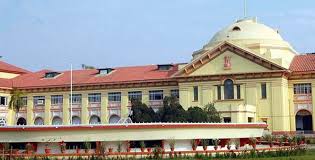 In the budget, money allocated to the Ministry of Ayush has been increased by 13 per cent and the exact value is Rs 1,626.37 crore. The money allocated to the Ministry of Ayush in the previous budget was Rs, 1,429 crore. As per one estimate, the total expenditure on the central sector schemes and projects carried out by the Ministry of Ayush has been Rs 71.36 crore. For the year, 2017-18, the total expenditure was Rs 68.66 crore. In the revised budget for last fiscal, it was increased to Rs. 87.64 crore.
In the budget, money allocated to the Ministry of Ayush has been increased by 13 per cent and the exact value is Rs 1,626.37 crore. The money allocated to the Ministry of Ayush in the previous budget was Rs, 1,429 crore. As per one estimate, the total expenditure on the central sector schemes and projects carried out by the Ministry of Ayush has been Rs 71.36 crore. For the year, 2017-18, the total expenditure was Rs 68.66 crore. In the revised budget for last fiscal, it was increased to Rs. 87.64 crore.
The emphasis is to increase budget for regulatory and statutory bodies like Central Council of Indian Medicine (CCIM) and Central Council of Homeopathy (CCH). In case of regulatory and statutory bodies the outlay is Rs. 960 crore as compared to Rs. 7.99 crore in the last fiscal. The budget is also nurturing the autonomous bodies like All India Institute of Ayurveda, Central Council for Research in Ayurvedic Sciences, National Institute of Homoeopathy, Kolkata functioning under the Ministry of Ayush. In case of autonomous bodies the outlay is Rs. 906.70 crore as compared to Rs. 804.30 crore in the last fiscal.
Why increase was needed?
Ayush stands for Ayurveda, Siddha, Unani and Homeopathy. The increase in money allocation to the Ministry of Ayush is justified as it caters to the need of four distinct systems of medicine. Majority of the budget sanctioned for healthcare is shared by the Allopathic system of medicine. The small amount of the budget sanctioned for Ayush is too small and it is utilized by ASU and Homeopathy. Now, Sowa Rigpa (Amchi System of Medicine) has been given official recognition by CCIM. In this way budget requirements for Ayush are increasing and in coming years, allocation of more funds shall be needed.
The chief mandate of Govt of India is to bring Ayush at par with Traditional Chinese Medicine and increase the annual turnover in the global herbal drug market. This is an ambitious aim and lot of work is required to develop Ayush systems of medicine on lines parallel to Traditional Chinese Medicine. If the aim has to be achieved, first of all radical changes in Ayurvedic education, both at undergraduate and postgraduate level are immediately required.
Initially, the budget allocation for Ayush sector was on lower side. With global renaissance of Ayurvedic science, the Ministry of Ayush felt to need to accelerate the R&D and gradually with every passing year (particularly after 2013), the amount of budget allocated is increasing. The major challenge is proper utilization of the funds for promoting research and development in Ayush. In this regard, it is worthwhile to discuss that very rarely, a project is allocated to Ayush institutions, probably due to lack of infrastructure and quality stiff with exposure to research. This is a gray area needing serious thought so that the chance of generating scientific in Ayush students is not missed out.
The bitter truth is that still Ayurvedic graduates are attracted towards Allopathic system of medicine, probably due to better career options. Recently, trend has changed and some of the graduates have shown seriousness for improving qualifications and making career in Ayush. The main reason for apathy towards Ayush sciences is lack of practical approach and this is the apparent reason, in case of Ayurveda, Central Council of Indian Medicine has revised the undergraduate and postgraduate syllabus.
Areas in Ayush needing focus
As far as Ayurvedic sciences are concerned, institutions like National Institute of Ayurveda, Jaipur, All India Institute of Ayurveda, Delhi and North Eastern Institute of Ayush/Folk Medicine have been blessed with world-class infrastructure and pass outs of these institutions are better equipped than students passing out from other Ayurvedic institutions. The basic issue is equal opportunities for all the students, which is seldom available in majority of Ayurvedic institutions. All India Institute of Ayurveda, Panchkula is coming on lines similar to All India Institute of Ayurveda, Delhi.
When it comes to Ayush universities, Banaras Hindu University, Varanasi and Gujarat Ayurvedic University, Jamnagar and Rajasthan Ayurvedic University, Jodhpur has made significant contribution in developing global platform for Ayurveda. On the other hand, recently established Ayush universities like Guru Ravi Das Ayurvedic University, Hoshiarpur and Uttarakhand Ayurved University, Dehradun are in process of establishing the credentials. Uttarakhand Ayurved University introduced Ph.D. in Phytochemistry, a welcome step as far as innovation is concerned. Shri Krishna Ayush University, Kurukshetra, is coming up in State of Haryana and is expected to play a critical role in development of Ayush sciences.
The multi-dollar question is that whether opening of national institutes and AYUSH universities can provide the solution of producing quality Ayush stuff for the purpose of education and industry. As an instance, Guru Ravi Das Ayurvedic University, Hoshiarpur was set up to expedite Ayush research across the state. But, the bitter truth is that Government Ayurvedic College, Patiala, a premier Ayurvedic institute in India sometimes, has still not been upgraded as constituent college of the university. Government Ayurvedic College, Patiala was imparting postgraduate education in Ayurveda, however discontinued due to lack of proper infrastructure. Till to date, Guru Ravi Das Ayurvedic University, Hoshiarpur has failed to start up doctorate course in Ayush.
The opening of Ayush universities is increasing avenues for Ayush fraternity. When the idea of integrative medicine is discussed, then opening of more Ayush universities shall become senseless. Recently integration of Ayush with modern medical science has been recommended so as to increase job opportunities for Ayush doctors. Both approaches are contradictory and experts need to take rational steps for proper implementation of recommendations of various committees constituted in independent India.
Ayush vs Yoga
Recent times have witnessed growing popularity of Yoga and Naturopathy. Ayush also needs same focus as drugs of varied origins find use in medicine. Yoga is a drugless method of preventing and alleviating diseases, hence commercial viability is less as compared to Ayush systems of medicine. It is wrong to compare the efficacy of both the systems and Ayush has potential in providing cost-effective and potential drugs for curing several resistant diseases.
HR in Ayush
In the recent budget, money allocated to the Ministry of Ayush may have been increased by 13 per cent but it is essential to mention here that the grants and money is utilized in a rational way for developing Ayush systems of medicine. Human resource has a poor track-record as far as Ayush systems of medicines are concerned. Induction of quality faculty in Ayush institutions, opening of teacher training institutions across the country, improving infrastructure from study and research point of view and engagement of resource persons are some of measures required immediately.
CCIM has taken several remedial steps for improving education standards in Ayush colleges. Implementation of the Aaadhar enabled GPS taggedBio-metric Attendance System of CCIM in Ayush institutions is a welcome step in this direction. This step shall help to curb dummy students and teachers in Ayush institutions. Several colleges are without regular faculty and it is the future of the admitted students at stake. It can be concluded that by increasing budget alone for Ayush is not going to achieve the aims and objectives but stringent rules and regulations have to be implemented so that ethics are followed.
Author: Dr. Amritpal Singh (Author is a herbal consultant based in Mohali)
Source:





